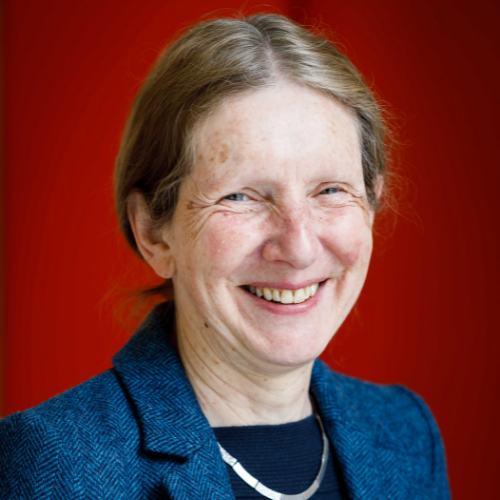4th Annual UK Rice Research Consortium: reflections
Nutrition
The 4th Annual UK Rice Research Consortium (UKRRC) meeting was held on the 10-11 November 2021. It was a hybrid (face to face and online via Zoom) meeting held at the Aberdeen Science Centre. The target attendees were academic group leaders and advanced researchers working on rice (UKRRC also holds an annual early career researchers’ event). It was entitled “Rice and Climate Change” and was timed to run concurrently with COP26 international climate conference in Glasgow. Funding was received from Rank Prize, the University of Aberdeen and the Genetics Society. There were 26 live delegates and 30 joined online. The meeting was opened by a short address from Professor Karl Leydecker, Senior Vice-Principal of the University of Aberdeen and was split into two science sessions.
The first sessions was “Greenhouse Gas Emissions, Resource Use Efficiency and Climate Impacts in Rice” and was started by Professor Tapan Adhya of Kalinga Institute of Industrial Technology, India addressing the meeting online. His talk “Sustainability of rice production system: in clash with the changing environment” gave a brilliant background to the importance of rice and the context of climate change both in terms of mitigation and adaptation. There were nine live presentations from the UKRRC community.
The second session was “Genetics and Genes for Adaptation to Climate Change” and was started by an online presentation from Dr Amelia Henry of the International Rice Research Institute who presented “The trait development pipeline for rice breeding”. This highlighted the climate change relevant traits, the genetic sources of genes and the breeding pipelines being used to exploit them. That was followed by one online and three further live presentations from the UKRRC community.
Talks across the two days covered a breadth of subjects related to rice, greenhouse gas emissions and adaptation to stress or low water input. There were talks about use of KASP markers for partnership projects in rice genetic diversity (Katherine Stele, Bangor), loci and candidate genes of Vietnamese cultivars selected for different regions and stresses (Janet Higgins, Earlham Institute), traits from rice (Asian and Africa) that contribute to photosynthetic efficiency (Jen Sloan, Sheffield and Eric Murchie, Nottingham), the use of a new MAGIC population of rice to allow mapping of loci conferring cold and heat tolerance (Funmi Ladejobe, University College London) implications of climate change (David Salt, Nottingham) and water-saving management (Gareth Norton, Aberdeen) on rice grain quality traits, heat tolerance in rice and other crops (Sigrid Heuer, NIAB), new high-accuracy methods for screening seedling vigour traits (Guillaume Menard, Rothamsted), the use of Neem coating of urea (as mandated in India) on reducing greenhouse gas emissions) (Dali Nayak, Aberdeen) and improved modelling of greenhouse gas emissions in rice agriculture (Matthias Kuhnert, Aberdeen).
In addition, talks based on specific genes that might be important for mitigation or adaptation to climate change were about nematode resistance genes (will be needed if less water is to be used in rice production as a way to reduce methane emissions) (Adam Price, Aberdeen), AXR4 that regulates the gravitropic response of rice roots (and therefore influence rooting depth) (Ranjan Swarup, Nottingham), and the process of post-transcriptional regulation of gene activity in response to the environment focusing on SUMOylation (Ari Sadanandom, Durham).
A well as scientific presentations there were three discussion sessions on “Planning UKRRC’s future”, “Funding Opportunities” and “Collaboration: Mapping and Joint Planning”. In the first session, the meeting decided to;
- broaden the scientific scope of those engaged in UKRRC activities so we include those working on modelling and human nutrition for example,
- form a steering committee which will aim to enhance communication within the community of UK rice researchers,
- explore how the community can better engage with the UK Government’s “Tilt to the Indo-Pacific” through consultation with Ottoline Leyser, Chief Executive of the UKRI,
- progress the concept of coordinating the availability of a core set of rice germplasm that might ensure many UK researchers were using the same cultivars to allow better comparison of findings
- make contact with industrial partners that might be used as partners in both research projects and pathways to impact.
Discussing funding opportunities, one idea that was widely appreciated was that of forming a support network around potential applicants for the EUs Horizon programme grants to help with writing and providing letters of support. This might enhance the success of UK researchers in this highly competitive scheme.
Mapping collaborations listed 12 current formal and informal (unfunded) research collaborations between partners of the UKRRC and a further 19 that were in development. We aim to put details of these on the UKRRC website and collect further information on collaboration from community members who were not present as a way of encouraging more collaboration and coordination of efforts within the community.
In the spirit of Climate Change and reducing the carbon footprint of research, live delegates were offered a £50 travel bursary if they used an alternative to flying for attendance. A total of six people claimed that fund.
Overall, the meeting was a great success, allowing some quality face to face dialogues (for some the first time since COVID-19 started) and interaction with online participants, even in the discussion sessions. Feedback was very good and only comments were some challenges with background noise in the live room being fed into the live video stream for online participants which is something those involved in hybrid meetings will have to work on in the future.
— Report by Professor Adam Price, Plant Molecular Genetics, Institute of Biological and Environmental Sciences, University of Aberdeen





